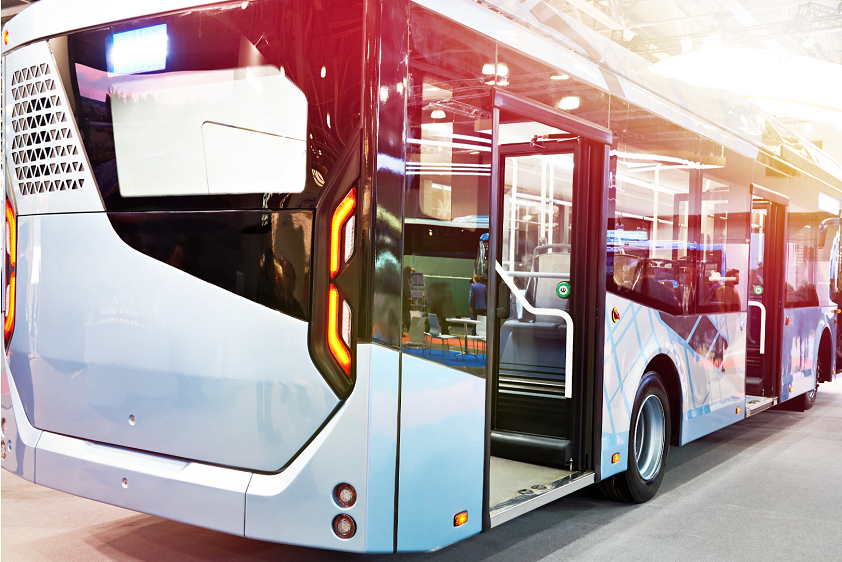Buses, shelters, and subways, oh my! From bus advertising to bulletins on street furniture, businesses are always on the lookout for effective ways to reach their target audience with out-of-home media. One innovative form of outdoor advertising is transit media. This blog post will delve into the concept of transit media, its advantages, challenges, and how to run a successful transit media campaign.
What is Transit Media, and Where Can You Find It?
Transit media refers to the use of advertising and promotional messages on various modes of public transportation, as well as related properties and services. It encompasses a wide range of formats, such as bus advertising and ads on subways, transit shelters, street furniture, and even digital signage on subway platforms. This versatile advertising method allows businesses to engage with commuters and travelers while they are on the move.
Types of Transit Media
- Bus advertising
- Train and subway advertising
- Transit station advertising
- Taxi advertising
- Airport advertising
- Ferry and waterway advertising
- Transit digital screens
- Transit wraps
- Transit map advertising
Geographic Areas and Transit Media Opportunities
Transit media opportunities tend to be more prevalent in major cities and metro areas where public transportation is widely used. These urban environments provide a captive audience of potential consumers who regularly commute to and from work. Additionally, transit media is also found in suburban areas, catering to commuters traveling to city centers. While it is less common in rural areas, efforts are being made to expand transit accessibility.
Industries Best Suited for Bus Advertising and Transit Media
Transit media can benefit a wide range of industries. Direct-to-consumer (DTC) companies find it particularly advantageous as they can target consumers during their daily commutes. Fashion brands, for instance, can strategically place ads in subway stations located in prominent fashion districts. Retail, healthcare, travel, and consumer products are also well-suited for transit media and bus advertising campaigns. In recent years, DTC companies without physical storefronts have increasingly turned to transit media to raise brand awareness and engage with their target audience. For example, Minted successfully targeted women in a specific income bracket in one of its transit media campaigns.
Advantages of Transit Media and Targeted Advertising
Transit media offers many advantages for advertisers, such as:
- Broad and diverse audience reach: Transit media provides the opportunity to reach a wide range of individuals, including commuters, students, tourists, and travelers. The high visibility and frequency of ads ensures that brands can engage with a diverse audience during their daily routines.
- Targeted locations: While transit media and bus advertising may have a broad reach, advertisers can strategically select specific locations to target their desired audience. By choosing stations or areas that align with their target demographics, businesses can maximize the impact of their ads. This is a huge advantage of transit media. For example, a healthcare company targeted communities with a higher risk of developing certain types of cancer to advocate for screenings. And NerdWallet took over one of BART’s busiest stations to target financially minded individuals in the heart of Silicon Valley.
- Non-intrusive advertising: Transit media allows advertisers to connect with consumers in a non-intrusive way. Commuters are naturally receptive to ads while they are waiting for their train or bus, creating a captive audience that is more likely to notice and engage with the messages.
- Long dwell time: Transit advertising takes advantage of the long dwell time that commuters have while using public transportation. Whether it’s a bus ride or waiting for a train, individuals have ample time to view and absorb the advertising messages, increasing the chances of brand recall.
- Cost efficiency: Transit media offers cost efficiencies, especially in certain formats like bus ads. Advertisers can achieve a lower cost per thousand impressions (CPM), making it an attractive option for businesses with budget considerations.
Challenges in Transit Media Advertising
While transit media offers numerous benefits, there are challenges to consider. The transient nature of transit media means that ads have limited exposure time compared to static billboards. Advertisers need to create compelling and concise messages that can capture attention quickly. Additionally, coordinating and managing transit media campaigns across multiple locations and formats requires careful planning and coordination. Other challenges with transit media include:
- Cluttered environment: With multiple advertisers vying for attention in a limited space, transit media can sometimes become cluttered. This poses a challenge for advertisers to stand out and make their messages memorable amidst the competition.
- Wasted coverage and limited targeting: Certain transit media formats, such as buses and subways, have a mass-reaching nature that may result in some wasted coverage or impressions on audiences that are not specifically targeted. Precise audience targeting can be challenging in these formats.
- Limited reach in rural areas: While transit media thrives in urban and suburban areas, it may face limitations in reaching audiences in rural locations where public transportation is less prevalent. Advertisers need to consider the availability and effectiveness of transit media in specific regions.
Transportation Trends and the Future of Transit Media
As transportation trends continue to evolve, the future of transit media looks promising. Efforts are underway to make public transit more accessible, even in rural and suburban areas. The integration of digital technology in transit media, such as dynamic content and real-time updates, enhances engagement and interactivity. Furthermore, advancements in data analytics and targeting capabilities will enable advertisers to refine their transit media campaigns and maximize their impact.
Transportation trends indicate a promising future for transit media. As the world focuses on clean air and sustainability, public transportation is becoming increasingly important. The rise of rideshare services, bike shares, scooters, and other forms of micro-mobility reflects the growing need for environmentally friendly transportation options. This aligns with the goals of transit media, which can leverage these transportation trends to reach a wider audience.
Furthermore, transportation companies themselves are entering the advertising space by selling their own out-of-home inventory. Uber and Lyft, for example, are offering advertising opportunities within their platforms. This development opens up new possibilities for advertisers to tap into the growing rideshare market and target their audience effectively.
In addition to these advancements, the integration of digital technology is transforming transit media. With digital assets, there is potential for enhanced tracking and measurement capabilities. Advertisers can gain more insights into the performance of specific assets and better understand their return on investment (ROI). As smartphones continue to track our movements, the ability to correlate ad exposure with consumer behavior will become more refined.
It is forecasted that in 2023, digital out-of-home (DOOH) advertising spending in the United States will grow by around 11.4%. However, static advertising remains important for its share of voice impact. Static formats continue to play a crucial role in transit media campaigns and should not be overlooked.
Running an Effective Bus Advertising and Transit Media Campaign
Several key factors should be considered to run a successful transit media campaign. First, define your target audience and key performance indicators for the specific campaign. To run an effective campaign, you must understand your audience intimately. Only then can you choose the proper market, formats, and placement options. Always go back to your campaign objectives and check that you are fulfilling them at every step.
The transit media formats and locations you select must align with the demographics and behaviors of your audience. For example, if you are targeting tourists coming in from foreign cities, you have to understand the details of their journey from landing at the airport to visiting key sights throughout the city, including public transportation to and from their hotel and popular eateries in the area.
Some campaigns can be useful for amplifying a current customer base that you have, while others will target new audiences that you want to introduce to your brand. Be aware that what worked in the past might not necessarily work for a new campaign – every single one is different, even if only slightly.
The targeting power of transit media campaigns is not to be underestimated. The specificity possible with these types of campaigns is a big part of what makes them so powerful and successful for many types of businesses, and EMC Outdoor can show you how.
Contact EMC Outdoor for Bus Advertising and Transit Media Consulting
Transit media presents a unique and effective advertising opportunity for businesses to connect with their target audience during their daily commutes, significantly enhancing brand visibility and engagement.
For more information about transit media and how it can benefit your business, visit EMC Outdoor’s website today.





